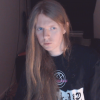Colour coding DNA promises cheaper sequencing
22:00 11 April 2005
NewScientist.com news service
Celeste Biever
By dyeing each of DNA’s four building blocks a different colour, a short section of the human genome has been sequenced by Jingyue Ju, a chemical engineer, and his colleagues at Columbia University in New York City, US. With more work, the technique could be used to sequence millions of longer DNA strands in parallel, slashing the cost of sequencing a whole mammalian genome.
The team added dyes to ordinary DNA building blocks, called nucleotides, according to which of the four DNA bases - adenine, guanine, cytosine and uracil - the nucleotides contained. Then they induced a single, 12-base strand of DNA from the human p53 gene to build a complementary copy of itself out of the modified nucleotides. The resulting strand of DNA codes for the original 12-base strand, but unlike the original can be sequenced easily because it is brightly coloured.
Traditionally, DNA sequencing is done using a technique called Capillary Array Electrophoresis (CAE) which sequences DNA strands by smashing them into millions of different fragments and then piecing them together again, using very sophisticated software. It works well, but faster, cheaper methods are needed as a maximum of 384 strands can be sequenced at a time and the technique requires expensive equipment and reagents.
“We have milked CAE for all the cost reduction we are ever going to get,” says Jeff Schloss at the National Human Genome Research Institute (NHGRI) in Bethesda, Maryland, US, which funds Ju’s work.
Touching bases
One commercially available alternative is pyrosequencing, which also detects nucleotides as they are added to a single strand of DNA, but it can lead to errors because it is harder to differentiate between a single base and a whole stretch of identical bases next to each other, says Elaine Mardis, a geneticist at Washington University in St Louis, US.
In contrast, Ju’s modified nucleotides contain a blocker that ensures that only one base can be measured at a time, even if there is a whole stretch of identical bases. Once its colour has been detected and recorded, the dye and the blocker are cleaved away using a laser light, allowing the next nucleotide to be added.
“This paper represents an exciting, impressive proof of principle, one important early step on the long path to really cheap genome sequencing,” says Chad Nusbaum, a geneticist at the Massachusetts Institute of Technology in Cambridge, US.
By funding this work, the NHGRI hopes to bring the cost of sequencing a mammalian sized genome down from $10 million to $1000 in the next 10 years - cheap enough for patients to have their genome sequenced before they receive genome-tailored treatments.











































